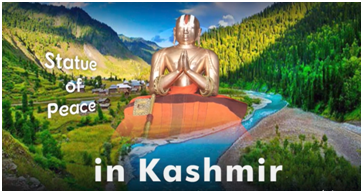

Context
Home Minister Amit Shah unveiled the 'statue of peace' of Swamy Ramanujacharya in Srinagar, Jammu and Kashmir.
About
Swamy Ramanujacharya:
- Ramanujacharya (1017 to 1137 CE) was a Tamil-Hindu theologian, philosopher and social reformer of the Vaishnava school of thought of the Sanatan Dharma.
- He was one of the earliest reformers of the discriminatory caste system and helped people who were considered untouchables to get absorbed into the Sri Vaishnava Bhakti movement to attain spiritual liberation.
- Born in 1017 in Sriperumbudur in Tamil Nadu, Ramanujacharya is revered as a Vedic philosopher and social reformer.
- He travelled across India, advocating equality and social justice.
- Ramanuja appealed for the protection of nature and its resources like air, water, and soil. He went on to write nine scriptures known as the navaratnas, and composed numerous commentaries on Vedic scriptures.
- Belief: Sri Ramanujacharya liberated millions with the foundational conviction that every human is equal regardless of nationality, gender, race, caste, or creed.
- Vishishtadvaita: Sri Ramanujacharya was a famous proponent of Vishishtadvaita, a sub-school of Ved?nta.
- Bhakti Movement: Bhakti movement was greatly influenced by Sri Ramanujacharya’s philosophical teachings of devotionalism.
- Ramanujacharya revived the Bhakti movement, and his preachings inspired other Bhakti schools of thought.
- He is considered to be the inspiration for poets like Annamacharya, Bhakta Ramdas, Thyagaraja, Kabir, and Meerabai.
- Temple Entry: Sri Ramanujacharya opened the doors of temples to all people, including those subjected to extreme discrimination.
- Literary Contributions: Sri Ramanujacharya,s literary contributions include bh?sya on the Brahma Sutras and the Bhagavad Gita, all in Sanskrit.




